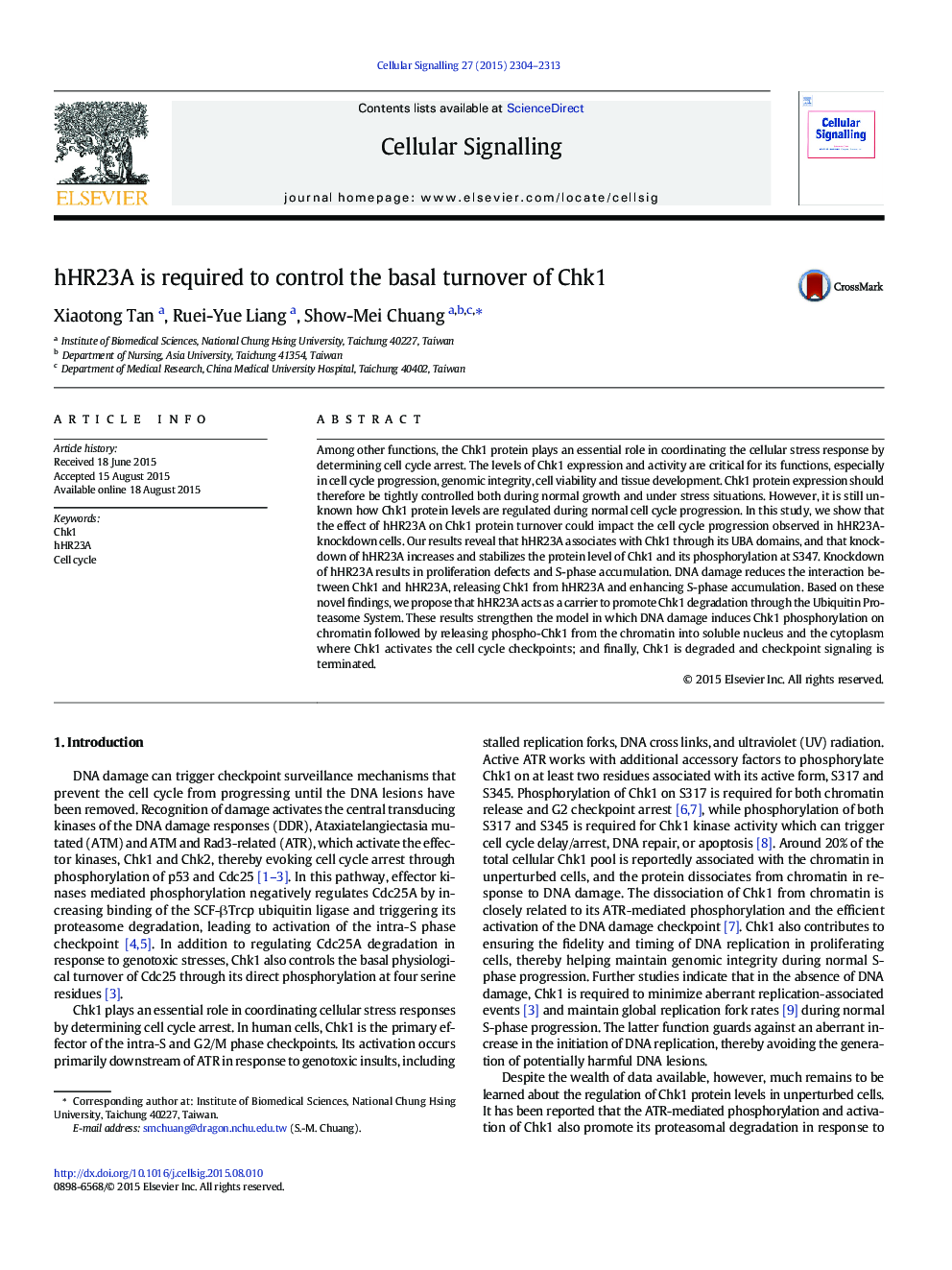| Article ID | Journal | Published Year | Pages | File Type |
|---|---|---|---|---|
| 1963568 | Cellular Signalling | 2015 | 10 Pages |
•hHR23A associates with Chk1 through its UBA domains.•Knockdown of hHR23A enhances the protein level and stability of Chk1.•Knockdown of hHR23A enhances the accumulation of S phase cells.•Knockdown of hHR23A increases the interaction of Chk1 with USP7.•DNA damage reduces the interaction between Chk1 and hHR23A.
Among other functions, the Chk1 protein plays an essential role in coordinating the cellular stress response by determining cell cycle arrest. The levels of Chk1 expression and activity are critical for its functions, especially in cell cycle progression, genomic integrity, cell viability and tissue development. Chk1 protein expression should therefore be tightly controlled both during normal growth and under stress situations. However, it is still unknown how Chk1 protein levels are regulated during normal cell cycle progression. In this study, we show that the effect of hHR23A on Chk1 protein turnover could impact the cell cycle progression observed in hHR23A-knockdown cells. Our results reveal that hHR23A associates with Chk1 through its UBA domains, and that knockdown of hHR23A increases and stabilizes the protein level of Chk1 and its phosphorylation at S347. Knockdown of hHR23A results in proliferation defects and S-phase accumulation. DNA damage reduces the interaction between Chk1 and hHR23A, releasing Chk1 from hHR23A and enhancing S-phase accumulation. Based on these novel findings, we propose that hHR23A acts as a carrier to promote Chk1 degradation through the Ubiquitin Proteasome System. These results strengthen the model in which DNA damage induces Chk1 phosphorylation on chromatin followed by releasing phospho-Chk1 from the chromatin into soluble nucleus and the cytoplasm where Chk1 activates the cell cycle checkpoints; and finally, Chk1 is degraded and checkpoint signaling is terminated.
Graphical abstractFigure optionsDownload full-size imageDownload high-quality image (157 K)Download as PowerPoint slide
